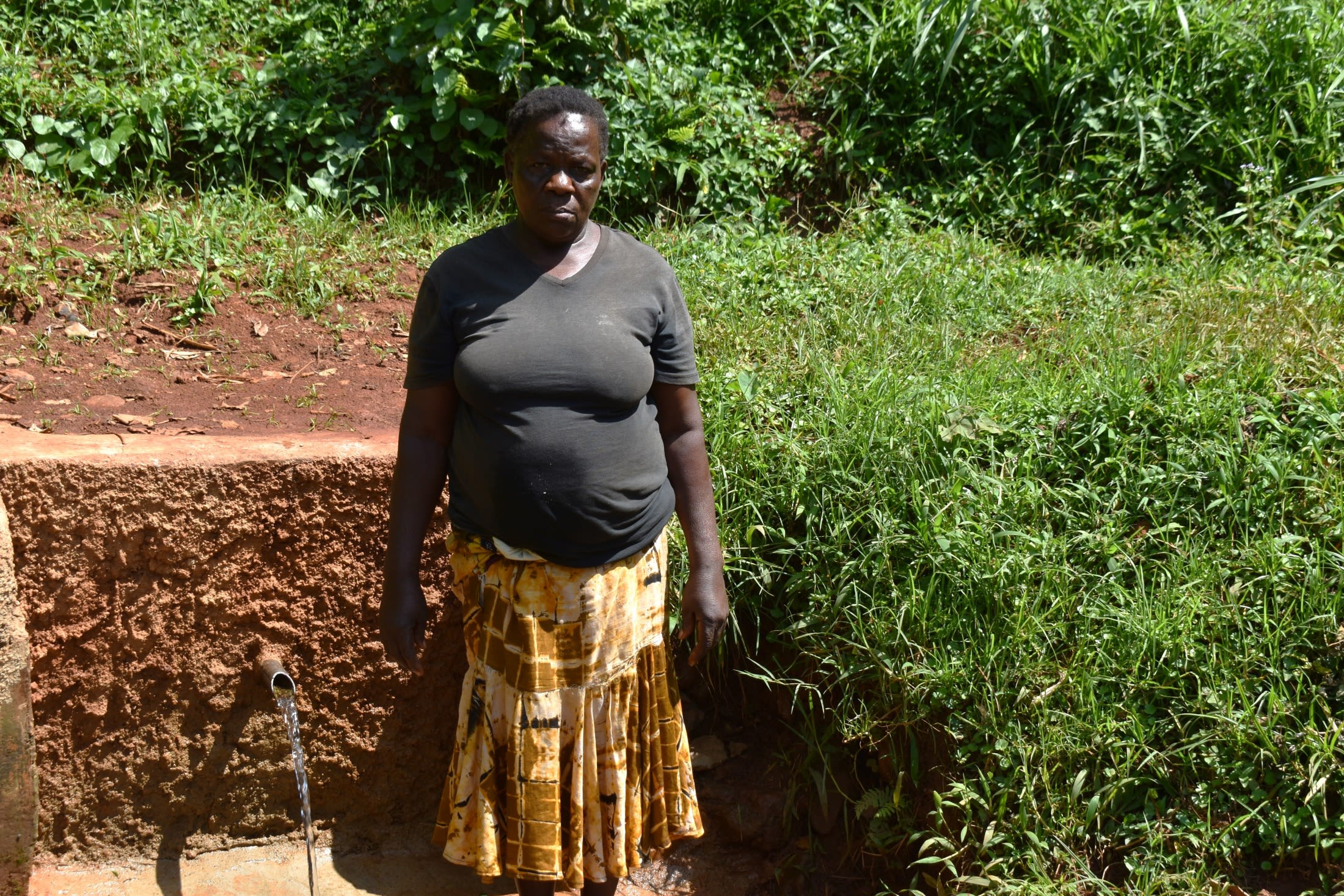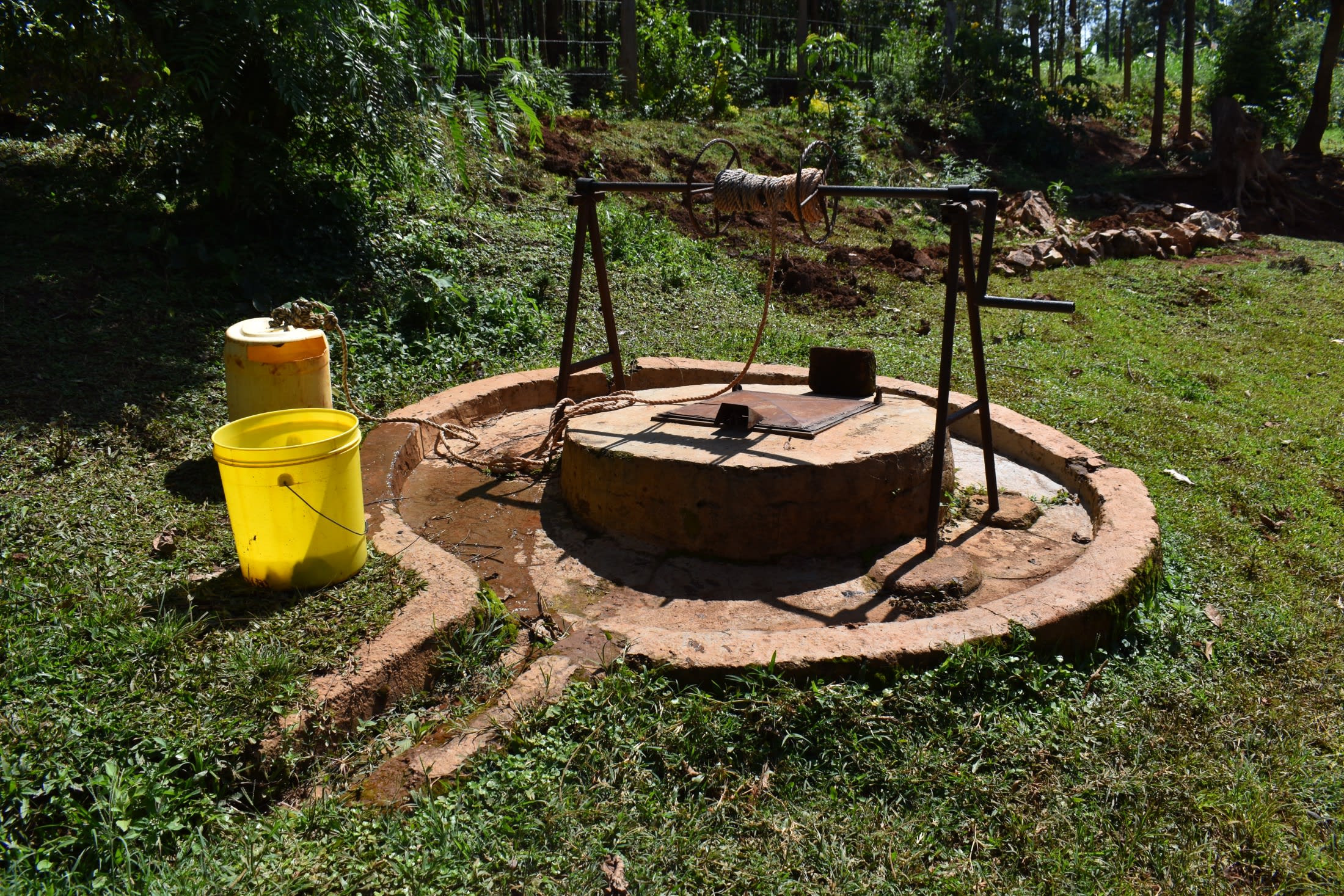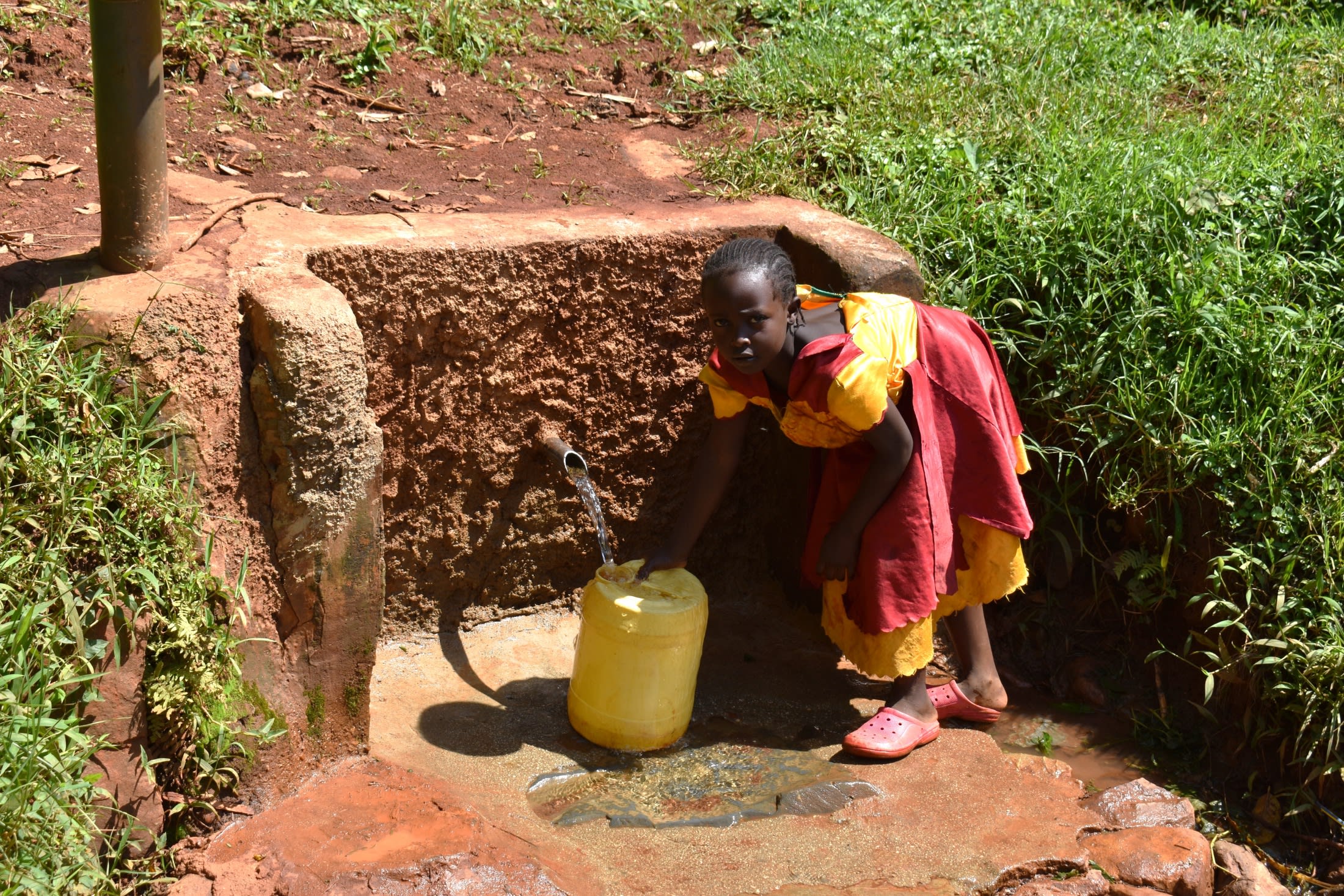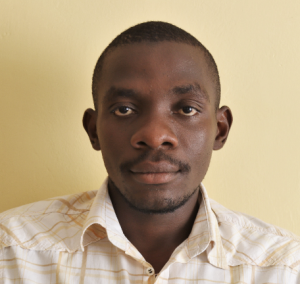The 380 community members of Mwikholo have thought of giving up on their water point, Olunyiriri Spring, but that would leave them worse off than they are now.
"Despite their efforts to keep the spring in good condition, the spring has experienced numerous recurrent problems, which can be attributed to the poor workmanship during its first protection attempt," our field officer, Elvis Afuya, said.
He continued: "Despite the community members' efforts to repair and maintain the spring, the spring has consistently broken down. Water frequently diverts [around the water spout], leaving community members with no access to water via the discharge pipe. The drawing area, despite numerous attempts to repair it, is in a dilapidated condition."

"We spend roughly 30 minutes lining up here to fetch a trip of water because of the slow discharge during diversion and due to the fact that the many community members come around at the same time. You send your child, and you have to follow up [on] why they are taking too long," said 43-year-old farmer Florence Ingana, seen above at the spring.
There is an alternative water point, a hand-dug well, but it is located on a community member's homestead, so access is limited. The collection method requires people to lower containers into the water, which is an infamous contamination route. In addition, the water in the well runs low during the dry season, leaving community members to depend solely on the spring.

The spring's high demand leads to overcrowding, especially during the rainy season when the spring is only accessible for a few hours a day because the area around it floods so badly. And when people have to wait so long for water, their daily schedules are negatively impacted, leaving vital tasks left undone.

"I spend a lot of time to fetch my three daily trips after school," said 8-year-old Mary L., shown above collecting water. "This has consistently denied me time to play with my fellow children after school. This also means I cannot do my assignments in the evening. With no electricity at home, I’m left to do it in the morning in a hurry. This has left a dent in my academic life."
With proper reconstruction of the spring, community members should be able to safely and quickly collect water whenever the need arises. And with hope restored in the community, who knows how things will improve for everyone?
What We Can Do:
Spring Reconstruction
Although the community attempted to protect this spring, it does not meet World Health Organization standards, which ensure that the water is protected from contamination and safe to access. Local expert artisans will remove the previous spring elements and correctly install new components to ensure the community’s access to clean, sufficient water.
Reconstruction by The Water Project artisans will ensure that this spring has all of the necessary components of a spring protection, which include:
- Stairs to provide access during any season
- Drainage channels to avert stagnant water
- Fencing to prevent the spring box’s filtration layers from being compacted by people and animals
- Correctly positioned discharge pipe(s) that allow(s) water-collection containers to sit beneath without human intervention
- Cement floor with tiles that preclude structure erosion
- Walls that channel water for proper drainage
- A chlorine dispenser to treat water for added safety
Reconstructing the spring will help provide access to cleaner and safer water and reduce the time people have to spend to fetch it. Construction will keep surface runoff and other contaminants out of the water. With the community’s high involvement in the process, there should be a good sense of responsibility and ownership for the new clean water source.
Fetching water is a task predominantly carried out by women and young girls. Reconstructing the spring and offering training and support will, therefore, help empower the female members of the community by freeing up more of their time and energy to engage and invest in income-generating activities and their education.
Training on Health, Hygiene and More
To hold training, we work closely with both community leaders and the local government. We ask community leaders to invite a select yet representative group of people to attend training who will then act as ambassadors to the rest of the community to share what they learn.
The training will focus on improved hygiene, health, and sanitation habits in this community. With the community’s input, we will identify key leverage points where they can alter their practices at the personal, household, and community levels to affect change. This training will help to ensure participants have the knowledge they need about healthy practices and their importance to make the most of their water point as soon as water is flowing.
Our team of facilitators will use a variety of methods to train community members. Some of these methods include participatory hygiene and sanitation transformation, asset-based community development, group discussions, handouts, and demonstrations at the spring.
One of the most important issues we plan to cover is the handling, storage, and treatment of water. Having a clean water source will be extremely helpful, but it is useless if water gets contaminated by the time it is consumed. We and the community strongly believe that all of these components will work together to improve living standards here, which will help to unlock the potential for these community members to live better, healthier lives.
We will then conduct a small series of follow-up trainings before transitioning to our regularly scheduled support visits throughout the year.
Training will result in the formation of a water user committee, elected by their peers, that will oversee the operations and maintenance of the spring. The committee will enforce proper behavior around the spring and delegate tasks that will help preserve the site.





 Protected Spring
Protected Spring
 Rehabilitation Project
Rehabilitation Project






























